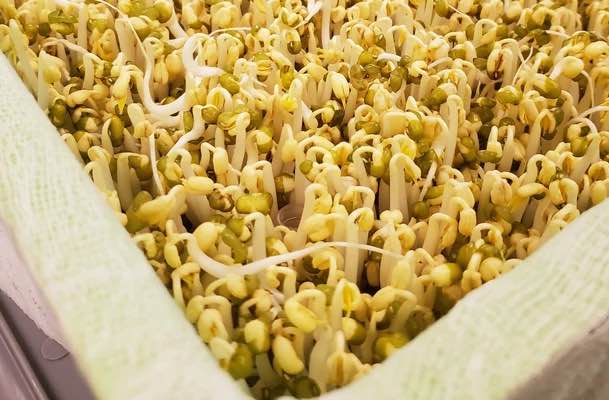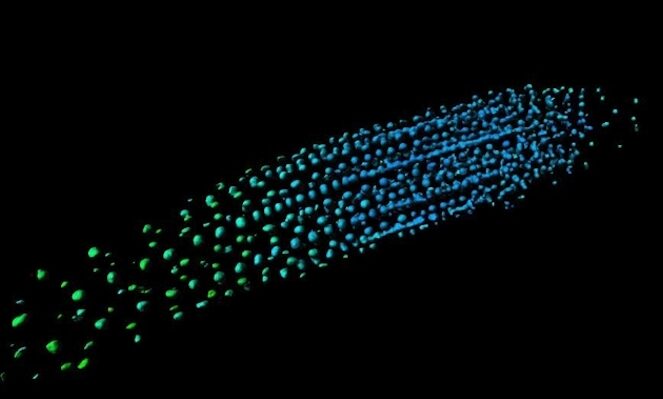


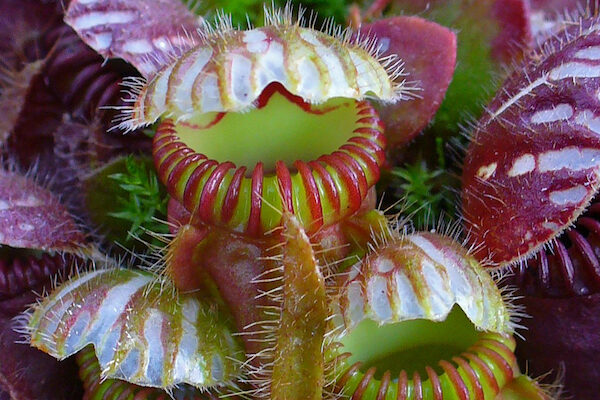


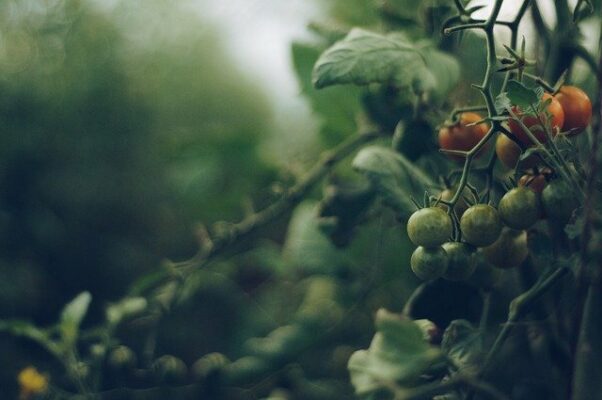
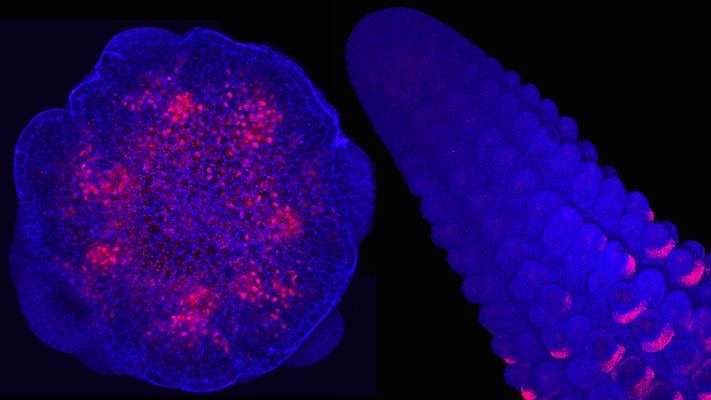

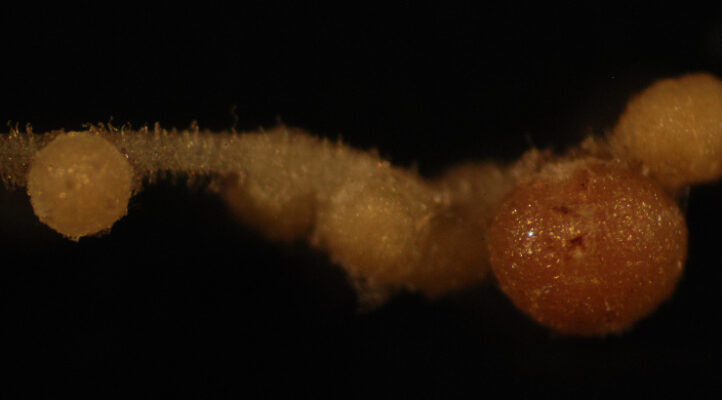
The mutually beneficial relationship between legumes and rhizobia, the nitrogen-fixing soil bacteria that make their home in legume root nodules and create nutrient-rich fertilizer for them, is one of the most well-known and agronomically important examples of symbiosis. New research from Dr. Kenjiro Quides, a Postdoctoral Teaching and Research Fellow in the Grand Challenges Initiative at Chapman University, tested the boundaries of this relationship — and found that it’s not always as perfectly harmonious as previously thought.
The results are reported in a new paper in the journal Evolution.
Legumes provide carbohydrates for rhizobial bacteria that live in root nodules, while the rhizobia fix atmospheric nitrogen into a form that’s usable for the legume (nitrogen is often a limiting nutrient for plants). In theory, if legumes have greater root nodule growth, they should be able to host more rhizobia, which should produce more nitrogen and enable larger plant growth in general.
The research, carried out by Quides and colleagues at UC Riverside during his doctorate, tested the relationship between root nodule growth and rhizobia using a smaller relative of Soybeans, named Lotus japonicus. By using multiple genetic variants that formed a low, medium, and high number of nodules, the study showed that legumes grew to maximum size when a low and medium number of nodules formed, but legumes that formed a high number of nodules had drastically reduced growth.
The investigation then turned to the rhizobia. The size of the rhizobial population, a standard measure of bacterial growth, was found to continue to increase as the number of nodules formed increased. This suggests a hidden conflict in the symbiotic relationship. It seems that the legume and rhizobia interests are only aligned until the host optimum is reached, a point at which their interests diverge. This provides support for the conclusion that in the symbiotic relationship, rhizobia have an evolutionary advantage.
The results demonstrate that to avoid conflict in symbiotic relationships, hosts must tightly regulate their investment into symbiotic organs (like legumes’ root nodules) to maximize their own benefit-to-cost ratio of associating with their symbiotic partner.
“Legumes seem to play a balancing act to maximize their growth, but rhizobia continue to grow and that is a really exciting result,” Dr. Quides said.
He noted that this study opens the door to more research. “Although we found diminishing returns for the host from nodulation, the fact that rhizobia population size continued to increase is promising. We found the costs outweigh the benefits at high nodule numbers. However, if we can increase the number of nodules and therefore the rhizobia population size while minimizing the cost to the plant, we have the potential to increase the productivity of legume crops in the future.”
Read the paper: Evolution
Article source: Chapman University
Image: A cluster of nodules on the roots of the plant Lotus japonicus. Bacterial rhizobia are housed within root nodules and supplied with carbohydrates from the host plant. The carbohydrates are used by rhizobia in exchange for the fixation of nitrogen then used by the plant. Credit: K. Quides
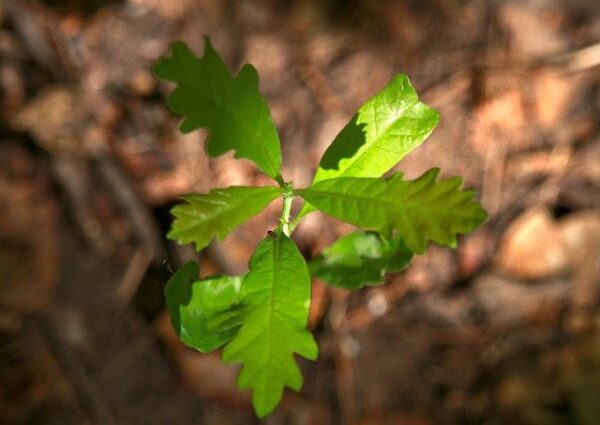
Scientists have been pondering if the microbiome of plants is due to nature or nurture. Research at Stockholm University, published in Environmental Microbiology, showed that oak acorns contain a large diversity of microbes, and that oak seedlings inherit their microbiome from these acorns.
“The idea that seeds can be the link between the microbes in the mother tree and its offspring has frequently been discussed, but this is the first time someone proves the transmission route from the seed to the leaves and roots of emerging plants”, says Ahmed Abdelfattah, researcher at the Department of Ecology Environment and Plant Sciences (DEEP) at Stockholm University.
The microorganisms found on the seed are often valuable for the plant, promoting its growth and protecting it against certain diseases. Each plant species harbours a distinct microbial community, with some of the microbes living on its surface and others inside the plant’s tissues.
The finding also means that since the microorganisms from the seed are there first, they can constitute a barrier which influences subsequent colonization by other microbes from the environment. The experiment was done in oaks, since it’s one of the most abundant tree species in the Swedish and European forests.
“The microorganisms from the seed are also expected to be very important for plant health and functioning”, says Ahmed Abdelfattah.
The fossil record indicates that plants have been associated with fungi and bacteria – constituting the microbiome – for more than 400 million years. Several species the scientists found on the oak seeds are already shown by other studies to be involved in the protection against several plant pathogens, growth-promotion, nitrogen-fixing, and the detoxification or biodegradation of toxic environmental pollutants.
Demonstrating inheritance under natural conditions is challenging since seeds are exposed to and dependent on their surrounding environment when they sprout, especially the soil, which is a microbially rich environment. Therefore, it’s nearly impossible to differentiate between which microorganism actually come from the seed or from the soil. The research team therefore used a novel culturing device, to grow oak seedlings in a microbe-free condition and keep the leaves separated from the roots. This allowed them to be certain that the microorganisms came from the seed, and that they could demonstrate that some seed microorganisms migrate to the roots, and some others to the leaves.
“Plant leaves and roots are already known to harbor distinct microbial communities, as shown by several recent studies. In this study however, we were surprised to see that it is also true at an early stage of the plant development, and that the seed could, at least partially, be responsible for these differences”, Says Ahmed Abdelfattah.
“Several breeding companies are taking into consideration the seed microbiome in their programs hoping to have super plants with better genes and better microbes. One technique used, is to treat seeds with beneficial microorganism with the aim that those microbes will eventually colonize the plant and exert their effects throughout the plant’s life”, says Ahmed Abdelfattah.
The next step for the research team is now to discern which is the major source of the of the microbiome – the environment or the seed.
Read the paper: Environmental Microbiology
Article source: Stockholm University
Author: Amanda Gonzalez Bengtsson
Image credit: Ирина Ирина / Pixabay
